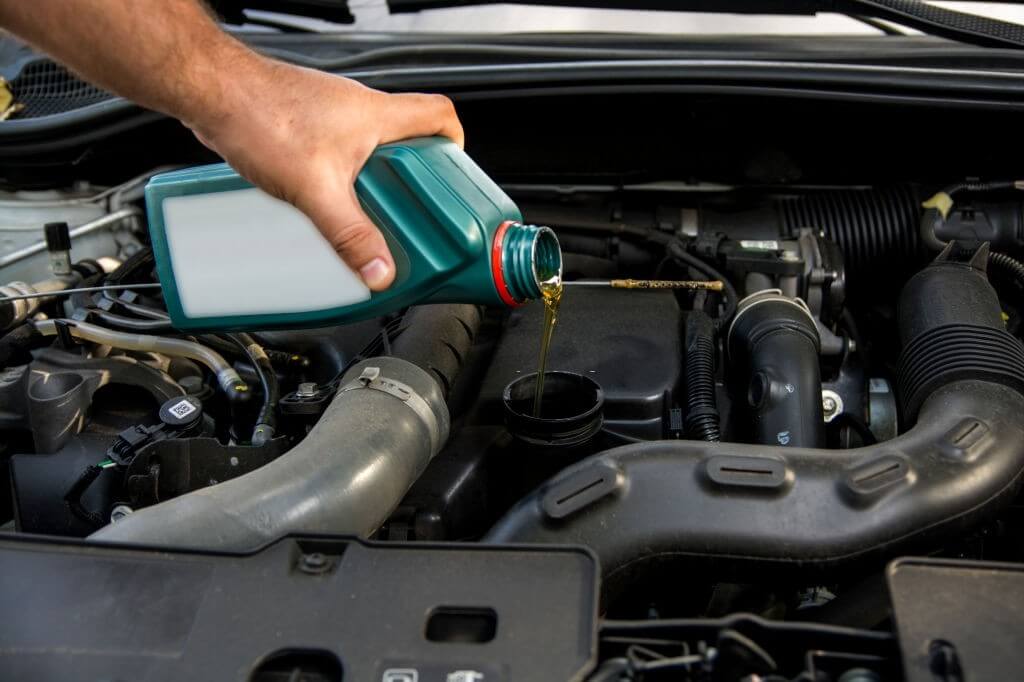It goes without saying that regular oil changes are critical in maintaining a clean, smooth, and fuel-efficient engine. In this simple DIY guide, we’ll show you the ropes on how to change the oil in your car’s engine. If you’re new to cars, learning how to change the engine oil will save you significant money in the long run, especially if your car is driven often.
Why Should I Change The Engine Oil?
Oil is the lifeblood of any engine. Without it, a basic engine will overheat and damage itself from the inside. Oil not only lubricates an engine’s internal parts, but its primary purpose is to provide consistent lubrication to prevent wear and tear. As it turns out, engine oil is also responsible for cooling and cleaning the engine.
Have you ever wondered why engine oil turns from clear or yellowish to brown or dark black after about 5,000 miles of driving? It means the oil is doing its job of removing dirt, sludge, and other harmful deposits inside the motor. As the engine oil wears out, it needs to be flushed and replenished accordingly. This is where you come in.
What’s The Right Motor Oil For My Car?
As with any make and model of the automobile, the recommended type and amount of motor oil is specified in the owner’s manual. In some models, the type of engine oil is indicated on the oil filler cap above the motor or in a decal plastered under the hood or around the engine bay.
If your car needs 5W-30 fully synthetic motor oil, make sure to buy the exact type to prevent annoying engine problems or performance issues in the long run.
Is It Okay To Use A Different Brand Of Motor Oil?
Yes, although it still depends on the type of vehicle. In some cases, specific vehicles have different oil requirements as defined by the API or American Petroleum Institute and the ILSAC or International Lubricant Standardization Approval Committee.
More than focusing on the brand, it’s better to shift your focus on two things when choosing motor oil for your car: Type of motor oil, and the viscosity grade.
What Are The Types Of Engine Oils?
There are now four general types of motor oil, and these are:
- Mineral
- Synthetic blend
- Full synthetic
- High-mileage motor oil
In most modern vehicles, full synthetic is the lubricant of choice. If you have an older vehicle, switching to a semi-synthetic blend will improve engine performance and fuel economy. Also, both synthetic blend and full synthetics are multi-grade oils while mineral oil is primarily classified as single-grade motor oil.
What’s The Viscosity Grade In Motor Oil?

In order to establish an industry-standard in automotive engine oils, the Society of Automotive Engineers or SAE established a coding system to determine an engine oil’s viscosity characteristics. There are two sets of measurements. The first measures cold temperature performance while the second measures high-temperature performance.
Cold weather performance is defined by either 0W, 5W, 15W, and 20W, with the W meaning ‘Winter’ and a lower number means thinner oil (or has lower viscosity) at cold temperatures. Meanwhile, high-temperature performance is measured by the numbers 8, 12, 16, 20, 30, 40, 50. In this case, a higher number means thicker oil (or higher viscosity) at temperatures above 100 degrees C.
For example, SAE 0W-30 oil means the oil maintains a lower viscosity at cold temperatures and remains ‘thick’ enough at higher temperatures. If your car needs this type of oil and you screwed up by putting 15W-20 motor oil, it means the oil won’t flow freely enough at extremely low temperatures to protect internal engine components. It also means the oil will ‘thin’ at higher temperatures and may not offer the same level of protection as 0W-30 oil.
From this, it’s easy to understand how pouring the wrong type of motor oil may slowly harm or damage an engine. And while it’s important to change the oil frequently, you need to get it right in terms of choosing the right type of oil.
How To Change Engine Oil

In truth, you only need basic materials to successfully change the oil. Here are the things you’ll need to get the job done.
- Fresh engine oil
- New oil filter
- Oil drain pan
- Open-end wrench or socket set
- Jack/jack stands or a lift when possible
- Latex hand gloves
- New drain plug washer (optional)
With that being said, here are the easy steps on how to change the oil in your car’s engine.
Step 1: Make sure the engine is slightly warm before draining the oil. Never change the oil if the motor is cold. If this is the case, start the vehicle and drive it around for 30 minutes or so. After driving, park the vehicle, turn off the engine, open the hood, and allow the engine to cool down for a bit before draining the oil.
Of course, it’s foolish to work with an overly hot engine. Remember, if the engine is hot, so is the oil! And since you’ll be in close contact with the existing oil as you flush it, there’s a huge danger of burning or injuring yourself if you don’t know what you’re doing.
As a precautionary measure, make sure the engine is slightly warm and not too hot for comfort.
Step 2: In some cases, you may need to raise the vehicle slightly using a jack, some jack stands, or possibly some ramps or a hydraulic lift. This holds true if your vehicle is standing too close to the ground. Whatever the case, make sure to lift the vehicle securely before proceeding.
Step 3: Locate the drain plug and the oil filter under the vehicle. The drain plug is usually located in the oil reservoir under the engine. The oil filter is also located underneath or on the side of the motor. When in doubt, consult the owner’s manual.
Step 4: Use an open-end wrench or socket set to carefully loosen the drain plug. As you turn the plug, the oil will start to drain towards the ground, so make sure to wear latex gloves and to position the drain pan underneath the engine. After a couple of turns, remove the drain plug from the hole and allow the oil to flow freely towards the drain pan.
Step 5: After waiting a couple of minutes to drain every drop of oil from the oil pa, it’s time to remove the oil filter. Use an oil filter wrench, place it over the oil filter, and turn it counterclockwise to loosen and remove the filter. As you remove the filter, position the drain pan to catch some of the oil left inside the oil pan.
Step 6: It’s time to replace the old oil filter with a new one. Take out the oil filter from the box and make sure the sealing gaskets are in place. Before inserting the new oil filter, open a bottle of new engine oil and apply a light coating towards the base of the new oil filter. This ensures the grooves are lubricated and are able to provide a tighter seal.
At this point, all you need to do is to literally screw in the new oil filter in place using your hands. Do not use an oil filter wrench to tighten the oil filter in place.
Step 7: Also, don’t forget to reinsert the drain plug and tighten accordingly. In some vehicles, the drain plug gasket should be replaced at every oil change. Check the owner’s manual.
Step 8: Remove the oil filler cap and pull out the oil dipstick. Open a bottle or can of fresh engine oil and pour it inside the engine. In some cases, a basic plastic funnel is helpful in this regard. Wipe the end of the dipstick with a clean microfiber towel and insert it back into the engine all the way to check the oil level. Keep adding oil until the desired oil level is achieved by repeatedly pulling out and inserting the dipstick.
Step 9: All you have to do now is to replace and tighten the oil cap and start the engine. Allow the motor to idle while you double-check for oil leaks in the drain plug and oil filter. If everything looks good, give yourself a pat in the back.
Now, that wasn’t too hard, right?
When Should I Change The Oil?
The golden rule is to follow the manufacturer’s recommendations in the owner’s manual of your vehicle. If it says to change the oil after every 5,000 miles, then you should do so at the prescribed mileage. But now, you can save money in every oil change since you already know how to do it yourself.

